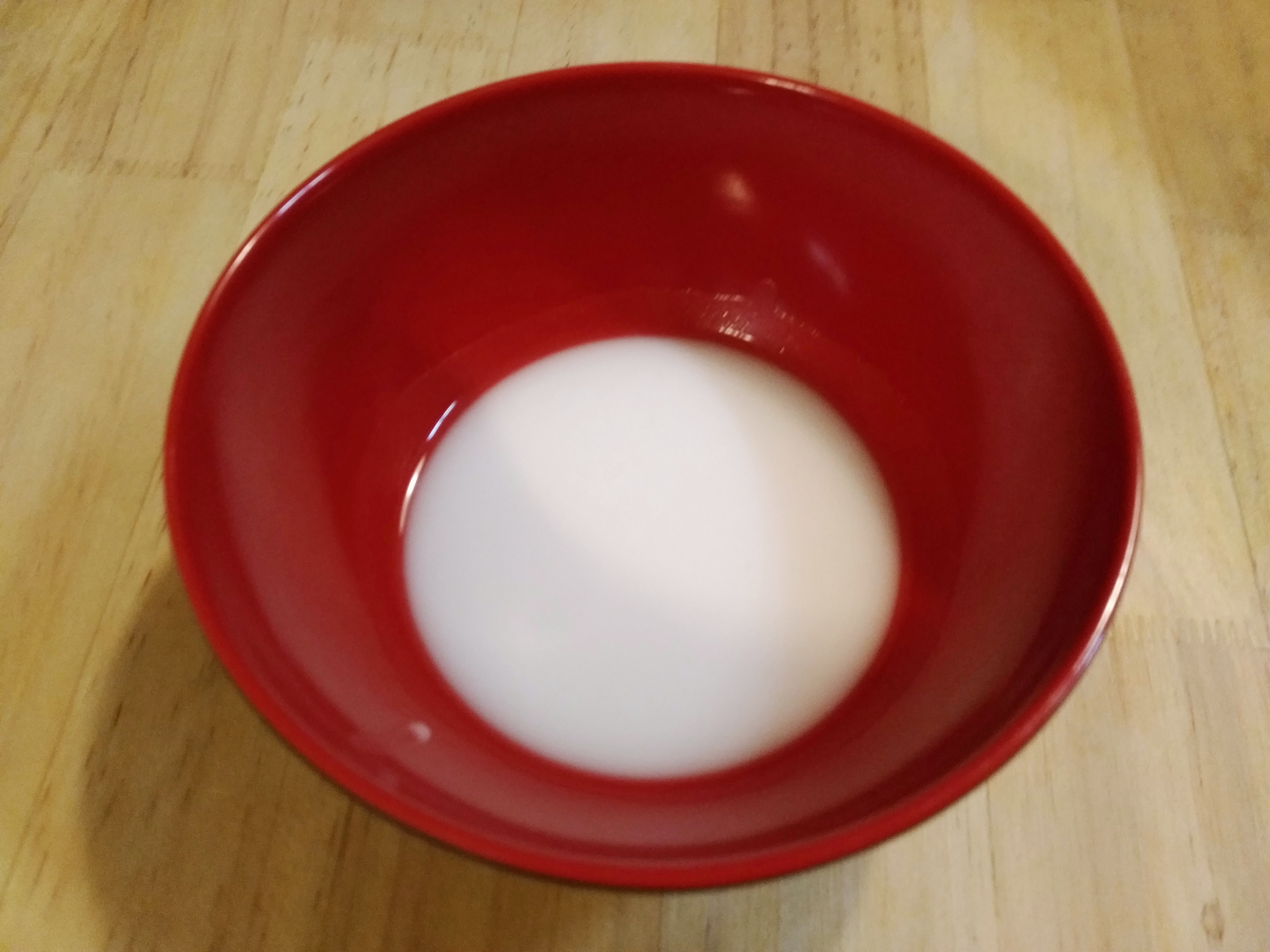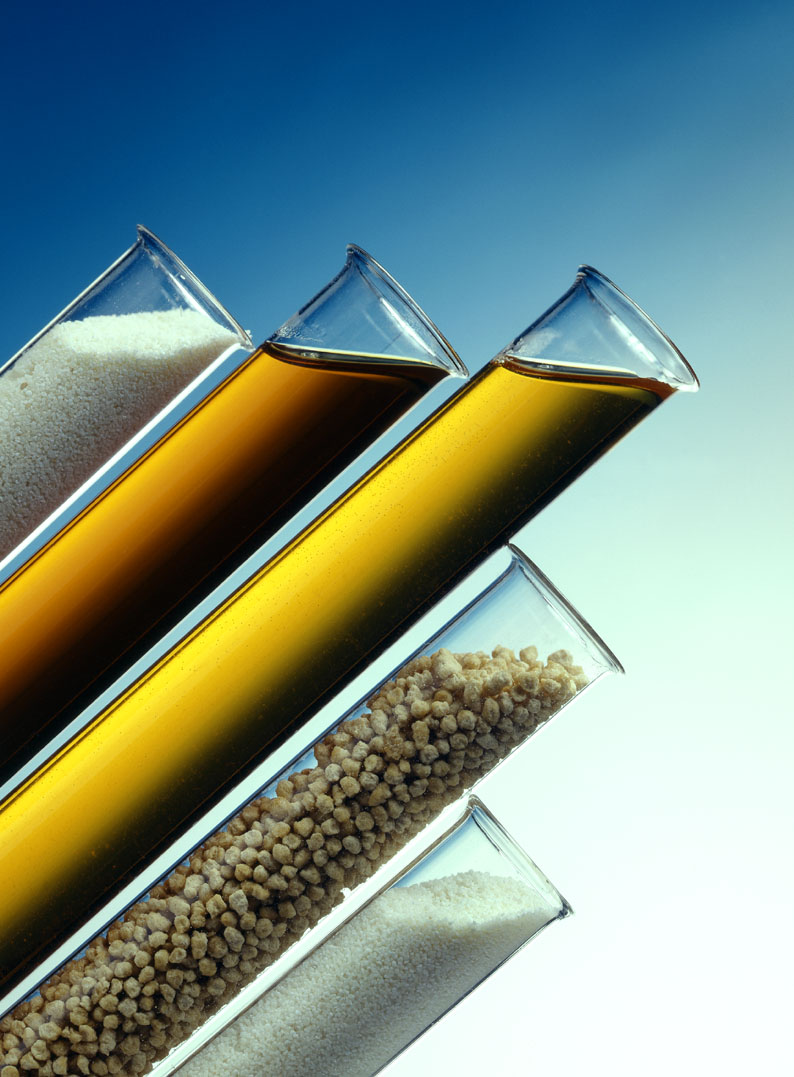|
Thickening
A thickening agent or thickener is a substance which can increase the viscosity of a liquid without substantially changing its other properties. Edible thickeners are commonly used to thicken sauces, soups, and puddings without altering their taste; thickeners are also used in paints, inks, explosives, and cosmetics. Thickeners may also improve the suspension of other ingredients or emulsions which increases the stability of the product. Thickening agents are often regulated as food additives and as cosmetics and personal hygiene product ingredients. Some thickening agents are gelling agents (gellants), forming a gel, dissolving in the liquid phase as a colloid mixture that forms a weakly cohesive internal structure. Others act as mechanical thixotropic additives with discrete particles adhering or interlocking to resist strain. Thickening agents can also be used when a medical condition such as dysphagia causes difficulty in swallowing. Some of these people may benefit ... [...More Info...] [...Related Items...] OR: [Wikipedia] [Google] [Baidu] |
Roux Bianco
Roux () is a mixture of flour and fat cooked together and used to thicken sauces. Roux is typically made from equal parts of flour and fat by weight. The flour is added to the melted fat or oil on the stove top, blended until smooth, and cooked to the desired level of brownness. A roux can be white, blond (darker), or brown. Butter, bacon drippings, or lard are commonly used fats. Roux is used as a thickening agent for gravy, sauces, soups, and stews. It provides the base for a dish, and other ingredients are added after the roux is complete. Ingredients The fat is most often butter in French cuisine, but may be lard or vegetable oil in other cuisines. Roux is used in three of the five mother sauces of classic French cooking: béchamel sauce, velouté sauce, and espagnole sauce. Roux may be made with any edible fat. For meat gravies, fat rendered from meat is often used. In regional American cuisine, bacon is sometimes rendered to produce fat to use in the roux. If clari ... [...More Info...] [...Related Items...] OR: [Wikipedia] [Google] [Baidu] |
Cornstarch
Cornflour, cornstarch, maize starch, or corn starch (American English) is the starch derived from corn (maize) grain. The starch is obtained from the endosperm of the kernel. Corn starch is a common food ingredient, often used to thicken sauces or soups, and to make corn syrup and other sugars. Corn starch is versatile, easily modified, and finds many uses in industry such as adhesives, in paper products, as an anti-sticking agent, and textile manufacturing. It has medical uses as well, such as to supply glucose for people with glycogen storage disease. Like many products in dust form, it can be hazardous in large quantities due to its flammability—see dust explosion. When mixed with a fluid, corn starch can rearrange itself into a non-Newtonian fluid. For example, adding water transforms corn starch into a material commonly known as oobleck while adding oil transforms corn starch into an electrorheological (ER) fluid. The concept can be explained through the mixtur ... [...More Info...] [...Related Items...] OR: [Wikipedia] [Google] [Baidu] |
Arrowroot
Arrowroot is a starch obtained from the rhizomes (rootstock) of several tropical plants, traditionally ''Maranta arundinacea'', but also Florida arrowroot from ''Zamia integrifolia'', and tapioca from cassava (''Manihot esculenta''), which is often labeled arrowroot. Polynesian arrowroot or pia (''Tacca leontopetaloides''), from Palawan-Philippines arrowroot ("uraro/araro"), Guyana arrowroot (''Dioscorea alata''), Japanese arrowroot (''Pueraria lobata''), also called kudzu, and purple arrowroot ''Canna indica'', are used in similar ways. In Odisha, India, it is called ପାଳୁଅ (paḷua). History Archaeological studies in the Americas show evidence of arrowroot cultivation as early as 7,000 years ago. The name may come from ''aru-aru'' (meal of meals) in the language of the Caribbean Arawak peoples, Arawak people, for whom the plant was a staple. It has also been suggested that the name comes from arrowroot's use in treating Arrow_poison, poison-arrow wounds, as it draws o ... [...More Info...] [...Related Items...] OR: [Wikipedia] [Google] [Baidu] |
Thickened Fluids
Thickened fluids and thickened drinks are often used for people with dysphagia, a disorder of swallowing function. The thicker consistency makes it less likely that individuals will aspirate while they are drinking. Individuals with difficulty swallowing may find that liquids cause coughing, spluttering, or even aspiration, and that thickening drinks enables them to swallow safely. Patients may be advised to consume thickened liquids after being extubated. Liquid thickness may be measured by two methods, with a viscometer or by line spread test. Thickening amount There are several levels of consistency/viscosity and these have historically varied by country, although the launch of the International Dysphagia Diet Standardisation Initiative (IDDSI) aims to remove this variation. According to the IDDSI, the thickness of a drink can be tested by measuring the amount that pours out of a 10ml syringe in 10 seconds. * 0 – Thin liquids: Unthickened, such as water or juice. Comm ... [...More Info...] [...Related Items...] OR: [Wikipedia] [Google] [Baidu] |
Viscosity
Viscosity is a measure of a fluid's rate-dependent drag (physics), resistance to a change in shape or to movement of its neighboring portions relative to one another. For liquids, it corresponds to the informal concept of ''thickness''; for example, syrup has a higher viscosity than water. Viscosity is defined scientifically as a force multiplied by a time divided by an area. Thus its SI units are newton-seconds per metre squared, or pascal-seconds. Viscosity quantifies the internal friction, frictional force between adjacent layers of fluid that are in relative motion. For instance, when a viscous fluid is forced through a tube, it flows more quickly near the tube's center line than near its walls. Experiments show that some stress (physics), stress (such as a pressure difference between the two ends of the tube) is needed to sustain the flow. This is because a force is required to overcome the friction between the layers of the fluid which are in relative motion. For a tube ... [...More Info...] [...Related Items...] OR: [Wikipedia] [Google] [Baidu] |
Pectin
Pectin ( ': "congealed" and "curdled") is a heteropolysaccharide, a structural polymer contained in the primary lamella, in the middle lamella, and in the cell walls of terrestrial plants. The principal chemical component of pectin is galacturonic acid (a sugar acid derived from galactose) which was isolated and described by Henri Braconnot in 1825. Commercially produced pectin is a white-to-light-brown powder, produced from citrus fruits for use as an edible gelling agent, especially in jams and jellies, dessert fillings, medications, and sweets; as a food stabiliser in fruit juices and milk drinks, and as a source of dietary fiber. Biology Pectin is composed of complex polysaccharides that are present in the primary cell walls of a plant, and are abundant in the green parts of terrestrial plants. Pectin is the principal component of the middle lamella, where it binds cells. Pectin is deposited by exocytosis into the cell wall via vesicles produced in the Golgi appara ... [...More Info...] [...Related Items...] OR: [Wikipedia] [Google] [Baidu] |
Vegetable Gum
Natural gums are polysaccharides of natural origin, capable of causing a large increase in a solution's viscosity, even at small concentrations. They are mostly botanical gums, found in the woody elements of plants or in seed coatings. Human uses Gums are used in the food industry as thickening agents, gelling agents, emulsifying agents, and stabilizers, and in other industrial adhesives, binding agents, crystal inhibitors, clarifying agents, encapsulating agents, flocculating agents, swelling agents, foam stabilizers, etc. When consumed by humans, many of these gums are fermented by the microbes that inhabit the lower gastrointestinal tract (microbiome) and may influence the ecology and functions of these microscopic communities. Commercial significance Humans have used natural gums for various purposes, including chewing and the manufacturing of a wide range of products – such as varnish and lacquerware. Before the invention of synthetic equivalents, trade in gum fo ... [...More Info...] [...Related Items...] OR: [Wikipedia] [Google] [Baidu] |
Starch
Starch or amylum is a polymeric carbohydrate consisting of numerous glucose units joined by glycosidic bonds. This polysaccharide is produced by most green plants for energy storage. Worldwide, it is the most common carbohydrate in human diets, and is contained in large amounts in staple foods such as wheat, potatoes, maize (corn), rice, and cassava (manioc). Pure starch is a white, tasteless and odorless powder that is insoluble in cold water or Alcohol (chemistry), alcohol. It consists of two types of molecules: the linear and helix, helical amylose and the branched amylopectin. Depending on the plant, starch generally contains 20 to 25% amylose and 75 to 80% amylopectin by weight. Glycogen, the energy reserve of animals, is a more highly branched version of amylopectin. In industry, starch is often converted into sugars, for example by malting. These sugars may be fermentation, fermented to produce ethanol in the manufacture of beer, whisky and biofuel. In addition, sugars ... [...More Info...] [...Related Items...] OR: [Wikipedia] [Google] [Baidu] |
Tapioca
Tapioca (; ) is a starch extracted from the tubers of the cassava plant (''Manihot esculenta,'' also known as manioc), a species native to the North Region, Brazil, North and Northeast Region, Brazil, Northeast regions of Brazil, but which has now spread throughout parts of the world such as West Africa and Southeast Asia. It is a perennial shrub adapted to the hot conditions of tropical lowlands. Cassava copes better with poor soils than many other food plants. Tapioca is a staple food for millions of people in tropical countries. It provides only carbohydrate food value, and is low in protein, vitamins, and Mineral (nutrient), minerals. In other countries, it is used as a thickening agent in various manufactured foods. Etymology ''Tapioca'' is derived from the word ''tipi'óka'', its name in the Tupi–Guarani languages, Tupi language spoken by natives when the Portuguese first arrived in the Northeast Region of Brazil around 1500. This Tupi word is translated as 'sedimen ... [...More Info...] [...Related Items...] OR: [Wikipedia] [Google] [Baidu] |
Dysphagia
Dysphagia is difficulty in swallowing. Although classified under " symptoms and signs" in ICD-10, in some contexts it is classified as a condition in its own right. It may be a sensation that suggests difficulty in the passage of solids or liquids from the mouth to the stomach, a lack of pharyngeal sensation or various other inadequacies of the swallowing mechanism. Dysphagia is distinguished from other symptoms including odynophagia, which is defined as painful swallowing, and globus, which is the sensation of a lump in the throat. A person can have dysphagia without odynophagia (dysfunction without pain), odynophagia without dysphagia (pain without dysfunction) or both together. A psychogenic dysphagia is known as phagophobia. Classification Dysphagia is classified into the following major types: # Oropharyngeal dysphagia # Esophageal and obstructive dysphagia # Neuromuscular symptom complexes # Functional dysphagia is defined in some patients as having no organic c ... [...More Info...] [...Related Items...] OR: [Wikipedia] [Google] [Baidu] |
Sago
Sago () is a starch extracted from the pith, or spongy core tissue, of various tropical palm stems, especially those of ''Metroxylon sagu''. It is a major staple food for the lowland peoples of New Guinea and the Maluku Islands, where it is called ''saksak'', ''rabia'' and ''sagu''. The largest supply of sago comes from Melanesia region, particularly Eastern Indonesia. Large quantities of sago are sent to Europe and North America for cooking purposes. It is traditionally cooked and eaten in various forms, such as rolled into balls, mixed with boiling water to form a glue-like paste (Papeda (food), papeda), or as a pancake. Sago is often produced commercially in the form of "pearls" (small rounded starch aggregates, partly Starch gelatinization, gelatinized by heating). Sago pearls can be boiled with water or milk and sugar to make a sweet sago pudding. Sago pearls are similar in appearance to the pearled starches of other origin, e.g. cassava starch (tapioca) and potato starch ... [...More Info...] [...Related Items...] OR: [Wikipedia] [Google] [Baidu] |
Food Additive
Food additives are substances added to food to preserve flavor or enhance taste, appearance, or other sensory qualities. Some additives, such as vinegar ( pickling), salt ( salting), smoke ( smoking) and sugar ( crystallization), have been used for centuries to preserve food. This allows for longer-lasting foods, such as bacon, sweets, and wines. With the advent of ultra-processed foods in the late 20th century, many additives having both natural and artificial origin were introduced. Food additives also include substances that may be introduced to food indirectly (called "indirect additives") in the manufacturing process through packaging, storage or transport. In Europe and internationally, many additives are designated with E numbers, while in the United States, additives in amounts deemed safe for human consumption are designated as GRAS. Identification To regulate these additives and inform consumers each additive is assigned a unique number called an "E number", whi ... [...More Info...] [...Related Items...] OR: [Wikipedia] [Google] [Baidu] |








